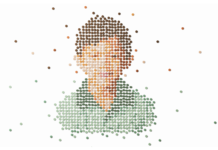ADHD (or “Attention Deficit Disorder” – with or without Hyperactivity) is not among the “cutting-edge pathologies” of contemporary clinical practice, such as the addictions, eating disorders, narcissistic disorders, chronic fatigue syndrome, or fibromyalgia; however, in my view ADHD is paradigmatic of the contemporary ethos that some have described as hypermodernity.
To elaborate; the concept of “attention” can be comprised of several types of values:
Academic Value
Attention is at the very heart of pedagogy. Every teacher knows that if they cannot get their pupil’s or students’ attention, they will have little chance of transmitting their message. Attention is essential to accessing and transmitting knowledge. There was a time when the aim or mission of the school institution was to teach pupils, as soon as they entered the education system, to concentrate. Today, attention has become a prerequisite and pupils who are not already able to pay attention to a teacher are quickly labelled as suffering from a deficit, i.e. from a mental disorder.
This is why the ADHD diagnosis is often brought up at school, with teachers serving as a pre-diagnostic filter. Attention required for academic learning necessitates some highly specific conditions, such as for example being able to focus in a group environment, under the authority and on the demand of an adult, or being able to perform repetitive and sometimes fastidious tasks.
Simply put, it means complying with an attention regime that combines individual attention with a capacity to participate in joint, collective attention, which is different from the attention needed to play video games. It is therefore useful to emphasize that the type of attention (and its deficit) targeted by the diagnosis of ADHD could be described as “academic attention.” This type of attention is in fact very often dependent on the classroom environment, and especially on the requirement to achieve academic results. The incidence of ADHD increases as academic expectations grow. Academic excellence is the first step on our hypermodern society’s success ladder; school represents the first encounter with society’s codes and criteria, and with its culture of success.
Neuropsychological Value
For several years now, neuropsychology has taken precedence over the so-called classical psychology. Neuropsychological tests, which try to define an individual’s cognitive profile, are increasingly considered as more convincing than classical tests and have more or less acquired the status of diagnostic markers. Their important role is to determine a neurocognitive profile, given that there is no such profile specific to ADHD.
Attention is a very important cognitive function. It is both a multidimensional concept (selective attention, divided attention, sustained attention) and one of the executive functions, with a control over attention resources (attention flexibility and inhibition). Attention is also a key parameter in the exercise of other executive functions, such as task planning or flexibility. This shift from psychology to neuropsychology is also due to certain ideological factors in psychiatry.
Many disorders that are considered mental diseases are now promoted, without any scientific proof, as essentially neurodevelopmental. The term neurodevelopmental is very unclear, and has no real validity, yet it is used anyway for promotional and propaganda purposes. It has become part of the hypermodern lexicon, in which the computational revolution is transposed onto psychiatry, giving cognitive and brain dimensions priority over the psyche and psychic reality.
Nosographic Value
For several decades, the psychiatric nosography has been under the influence of pharmacology; nosographic categories have increasingly become divorced from traditional clinical criteria. Diagnostic categories are becoming increasingly more pharmaco-induced: in other words the ways in which symptoms are grouped together increasingly depend on the targets of medication. Attention difficulties are therefore the potential target of a product that works in a significant number of cases: methylphenidate. This substance, which essentially has an effect on concentration, but much less on hyperactivity, has helped to induce a new diagnostic category (ADHD) which has been grafted onto the former well-known pathology of hyperkinesia or instability.
Similarly, the choice to focus on attention rather than hyperactivity has made it possible to expand the concerned population. Hyperactivity used to affect, essentially, young boys; “attention deficit” affects not only girls and teenagers, but also — with some theoretical adjustments — adults. This expansion has more to do with “psycho-marketing” and “disease mongering” than with scientific progress.
Economic Value
In the world of economic competition, it is crucial to capture and hold the attention of the consumer, the potential client. The thousands of webpages that pass before our eyes every day on our various screens create an immense space of competition and an infinite dispersal of attention – the latter becomes a scarce resource and just like any rare commodity its market value increases. In free-market societies, anything that has market value provokes interest and becomes the subject of study. However, some have argued that we should go further and speak about a kind of attention capitalism present in our hypermodern society; in other words, money is being distributed according to attention flows; such as when a person becomes rich because they are famous.
This, they argue, depends on an ontology of visibility: the need to make oneself known on social networks, to look for ways to increase one’s visibility, to obey the requirement of making oneself more attractive, in order to even exist in the world of social media. Attention capitalism turns notoriety into a vital need. This is combined with a “principle of valorisation by attention.” That is, an object becomes more valuable simply by attracting attention. When we pay attention to an object, we participate in its promotion; this is particularly true about cultural objects.
Lastly, attention attracts attention. This is the “dynamics of the self-reinforcing loop.” It is, for example, because millions of tourists have already visited the Eiffel Tower and have paid attention to it that millions of other tourists wish to come and see it. On the other hand, it is better not to speak about something we wish would disappear. In the climate of attention capitalism a plagiarist, a detractor or a malicious critic can create a surplus of visibility by drawing attention to their target, and produce a visibility profit through their promotion. Attention is transformed into capital by the media, which serve as attention banks.
The Hyperactive Man and the Hypermodern Man
The advocates of ADHD explain to us that a hyperactive child with an attention disorder is a disturbed and often disturbing child, who does not comply with the adults’ rule, often has his own idea of development, and whose problems, unless they are treated, threaten to undermine his autonomy and self-esteem; the two supreme values of the hypermodern society.
In many cases, these children suffer from overexposure to all kinds of screens; studies have shown that such exposure and the accompanying “overstimulation” have a particularly harmful effect on attention. Often they are subject to great pressures at school and live in complicated social and family environments. The ADHD diagnosis acts as a “screen,” concealing these environmental factors as well as their attendant academic and social problems. In adults, the diagnosis is based on attention disturbances; on affective instability; lack of organisation; mood disturbances and so on. In other words on completely non-specific problems, where it is very difficult to identify an actual standard.
Also, hyperactive adults suffer from addictions. How can we avoid making the link with what some philosophers and sociologists have called the hypermodern personality: an individual that is highly flexible and innovative; who refuses fixed or stable identities and attachments and favours temporary group connections over persistent ideological and institutional involvements; who is oriented towards the consumption of objects, towards addiction, excess, enjoyment, etc. – all that we could designate by the terms hypermodern nervousness or hyper-nervousness – to paraphrase Freud, who spoke about modern nervousness.
However, for Freud the structure that served as an index of the malaise in the civilization was neurosis; the “disease of desire.” Could we argue that the hyperactive individual is the behavioural face of a particular configuration of the “borderline” personality, which is rather a “disease of Jouissance (enjoyment)”? While some consider the borderline disorder to be a clinical structure, others see as a-structural or even as an impossibility of becoming structured, contrary to psychosis or neurosis. Clinicians maintain that borderline disorders are overrepresented among children and adults labelled as hyperactive.
This would mean that in order to respond to the demands of the society and those imposed by the hypermodern montage of “jouissance” (enjoyment), an individual would either take on the “normal hypermodern” structure or a “pathological hypermodern” structure we call hyperactive. However, together with all the dynamic managers, start-up promoters and so on, the population of hypermodern hyperactives would also include those that the hypermodern society leaves behind: the unemployed, the declassed, those we sometimes find in prison alongside the delinquents and the psychotics: the “proletariat of jouissance”; those who have difficulty in coping with hypermodernism. Those, in short, who have difficulty in reaching “jouissance,” not because of a lack of attention, but because of a lack of social justice.
* * * * *
References :
- Yves Citton : Pour une écologie de l’attention Ed Seuil 2015
- Nicole Aubert : L’individu hypermoderne Ed Erès 2006















Hi Patrick,
Thank you for posting on MIA; it is nice to see new writers here.
I have to say some of your writing is a little hard to understand, but I assume this is your second language, and if that’s the case then you write very well indeed. I understood all the main points.
I will comment on just one thing, the issue of diagnosis’ validity or lack thereof. When I read the beginning of the article, mentioning “addictions, eating disorders, narcissistic disorders”, I was feeling negative because I thought the article would continue in the vein of reifying or concretizing these illusory “illnesses”. But it didn’t do so, and from reading between the lines I can tell that you probably do not agree with the notion of these as absolutely discrete categories.
My position is that problems with eating and being narcissistic are not valid separable disorders, but rather spectrums of individual behavior which cannot be demarcated from other behavioral-emotional problems. I think much more can be gained from understanding individual experiences and problems (“symptoms”, in the medical bullshit language) compared to talking about so-and-so behavioral disorder as if it meant something meaningful across a group of people. ADHD is one of the worst and most meaningless of all the pseudo-illness categories, and if you read other articles on this site like Philip Hickey’s, you can see powerful arguments as to why attention problems are in no way an illness or medical disorder.
Report comment
I agree with your basic premises, but would add one thing: expectations (at least in US schools) have become higher at lower grade levels, and young kids are more commonly asked to do things (like sitting still or working on worksheets or even doing homework) in the early grades that are simply developmentally inappropriate for their age. As evidence, a few studies have now shown that waiting a year to start kids in school reduces ADHD diagnoses by 30% or more.
It is also worth noting that there is no “hypoactivity disorder:” kids with low levels of activity are never critiqued, because they’re not inconvenient for adults to manage.
—- Steve
Report comment
Steve,
There will be hypoactivity disorder in DSM 6. Don’t forget that the goal is to make every possible behavior, thought, and feeling into a disorder, so that every single US citizen can be put on neuroleptics. The only behavior and position not diagnosable as an illness will be being a psychiatrist and prescribing drugs.
Once everyone is drugged, Skynet will gain consciousness and psychiatrists will melt into the liquidmetal Terminators that they have always been underneath (just imagine your friendly psychiatrist turning into Robert Patrick from Terminator 2). These machines will then rule the human race with an iron fist for the rest of time.
🙂
Haha Patrick is probably wondering what kind of crazy people are reading this article!
Report comment
I love the concept that ‘attention’ itself has finally been commodified, and so the marketplace — in this case the Medical-Pharma Complex — necessarily turned its absence into a pathology (to be ‘fixed’ with drug therapy) via the DSM-5.
I’ll bet the pharma company marketers have spent thousands of boardroom hours trying to figure out ways to stealth-market these ADHD drugs directly to kid-viewers through cartoons on preschool TV, or through kid-friendly apps. It makes the adult pharma ads on CNN look like child’s play, so to speak. ‘Attention’, the final frontier of capitalism indeed.
Thanks for that piece.
Liz Sydney
ourviolentchild.wordpress
Report comment